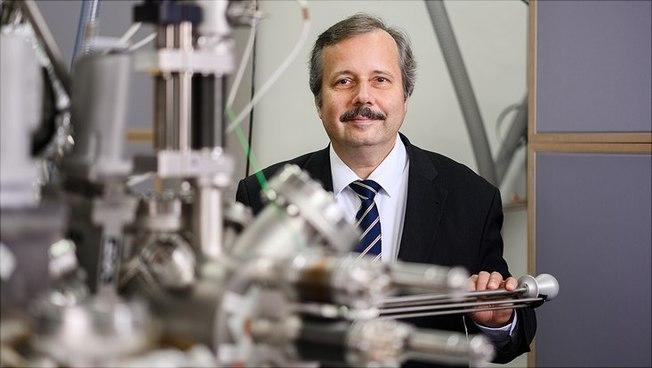
“A research group at the Wuhan City Virological Institute has been genetically manipulating coronaviruses for many years with the goal of making them more contagious, dangerous and deadly to humans…”
Unlike previous coronavirus-related epidemics such as SARS and MERS, to date, well over a year after the outbreak of the current pandemic, no intermediate host animal has been identified that could have facilitated the transmission of SARS-CoV-2 pathogens from bats to humans. Therefore, the zoonotic theory as a possible explanation for the pandemic has no sound scientific basis.
Swiss Policy Research: Professor Dr. Roland Wiesendanger, a leading German expert in the field of nanotechnology and three-time winner of the prestigious European Research Council Advanced Grant, has completed a one-year, hundred-page study on the origin of the novel coronavirus. Professor Wiesendanger concludes that “both the number and quality of the circumstantial evidence point to a laboratory accident at the virological institute in the city of Wuhan as the cause of the current pandemic.”
In the following, SPR provides an English translation of the official German press release of the University of Hamburg. The hundred-page German study by Prof. Wiesendanger can be found here.
SPR would like to add the following information: The two most recent global pandemics were the 1977 ‘Russian flu’ and the 2009 ‘swine flu’. In both of these cases, modern genetic research indicates that a lab escape was the most likely origin of the pandemic virus.
Study on the origin of the coronavirus pandemic published
Professor Dr. Roland Wiesendanger, University of Hamburg
For more than a year, the coronavirus has been causing a worldwide crisis. In a study, nanoscientist Prof. Dr. Roland Wiesendanger has now shed light on the origin of the virus. He concludes that both the number and quality of the circumstantial evidence point to a laboratory accident at the virological institute in the city of Wuhan as the cause of the current pandemic.
The study was conducted between January 2020 and December 2020. It is based on an interdisciplinary scientific approach and extensive research using a wide variety of information sources. These include scientific literature, articles in print and online media, and personal communication with international colleagues. It does not provide highly scientific evidence, but it does provide ample and serious circumstantial evidence:
Unlike previous coronavirus-related epidemics such as SARS and MERS, to date, well over a year after the outbreak of the current pandemic, no intermediate host animal has been identified that could have facilitated the transmission of SARS-CoV-2 pathogens from bats to humans. Therefore, the zoonotic theory as a possible explanation for the pandemic has no sound scientific basis.
The SARS-CoV-2 viruses are surprisingly good at coupling to human cell receptors and penetrating human cells. This is made possible by special cell receptor binding domains combined with a special (furin) cleavage site of the coronavirus zigzag protein. Both properties together were previously unknown in coronaviruses and indicate a non-natural origin of the SARS-CoV-2 pathogen.
Bats were not offered at the suspected fish market in the center of Wuhan city. However, the Wuhan City Virological Institute has one of the world’s largest collections of bat pathogens, which originated from distant caves in southern Chinese provinces. It is extremely unlikely that bats from this distance of nearly 2,000 km would have naturally made their way to Wuhan, only to cause a global pandemic in close proximity to this virological institute.
A research group at the Wuhan City Virological Institute has been genetically manipulating coronaviruses for many years with the goal of making them more contagious, dangerous and deadly to humans. This has been documented in the scientific literature by numerous publications.
Significant safety deficiencies existed at the Wuhan City Virological Institute even before the outbreak of the coronavirus pandemic, which have been documented.
There are numerous direct references to a laboratory origin of the SARS-CoV-2 pathogen. For example, a young female scientist at the virology institute in Wuhan is believed to have been the first to become infected. There are also numerous indications that as early as October 2019, the SARS-CoV-2 pathogen spread from the virological institute to the city of Wuhan and beyond. Furthermore, there are indications that the virological institute was investigated by the Chinese authorities in the first half of October 2019.
“The current coronavirus pandemic is not only dominating the current headlines, but will be with us for many years to come – not least because of the social and economic impact. For months, dealing with and managing the corona crisis has understandably been at the forefront of issues in politics and the media. However, the critical science-based examination of the question of the origin of the current pandemic is already of great importance today, because only on the basis of this knowledge can adequate precautions be taken to minimize the probability of similar pandemics occurring in the future,” says Prof. Dr. Roland Wiesendanger.
The study was completed in January 2021 and initially distributed and discussed in scientific circles. The publication is now intended to stimulate a broad discussion, particularly with regard to the ethical aspects of so-called “gain-of-function” research, which makes pathogens more infectious, dangerous and deadly for humans. “This can no longer remain a matter for a small group of scientists, but must urgently become the subject of a public debate,” says the study’s author.
Meanwhile… two weeks after World Health Organization wrapped up its junket to Wuhan, they’re doubling down on the natural origin hypothesis and have added two species to the list of potential crossover hosts; ferret badgers and rabbits, which ‘could have played a role’ in the spread to humans. Of course, they’d need to find one in the wild that can carry SARS-Cov-2 and infect a human.
According to the very conflicted Peter Daszak of the EcoHealth Alliance, who was on the WHO trip to Wuhan (and participated in coronavirus research at the Wuhan Institute of Virology after the Obama administration cut US funding for it in 2015), the genetic experts who have been creating chimeric coronaviruses to better infect humans couldn’t have possibly been the source.
Read the full hundred-page study in German on ResearchGate →


